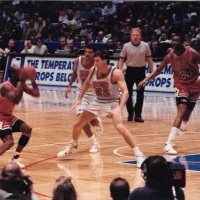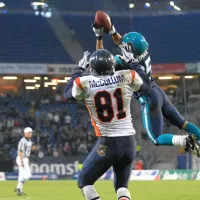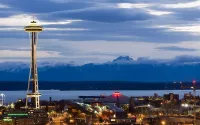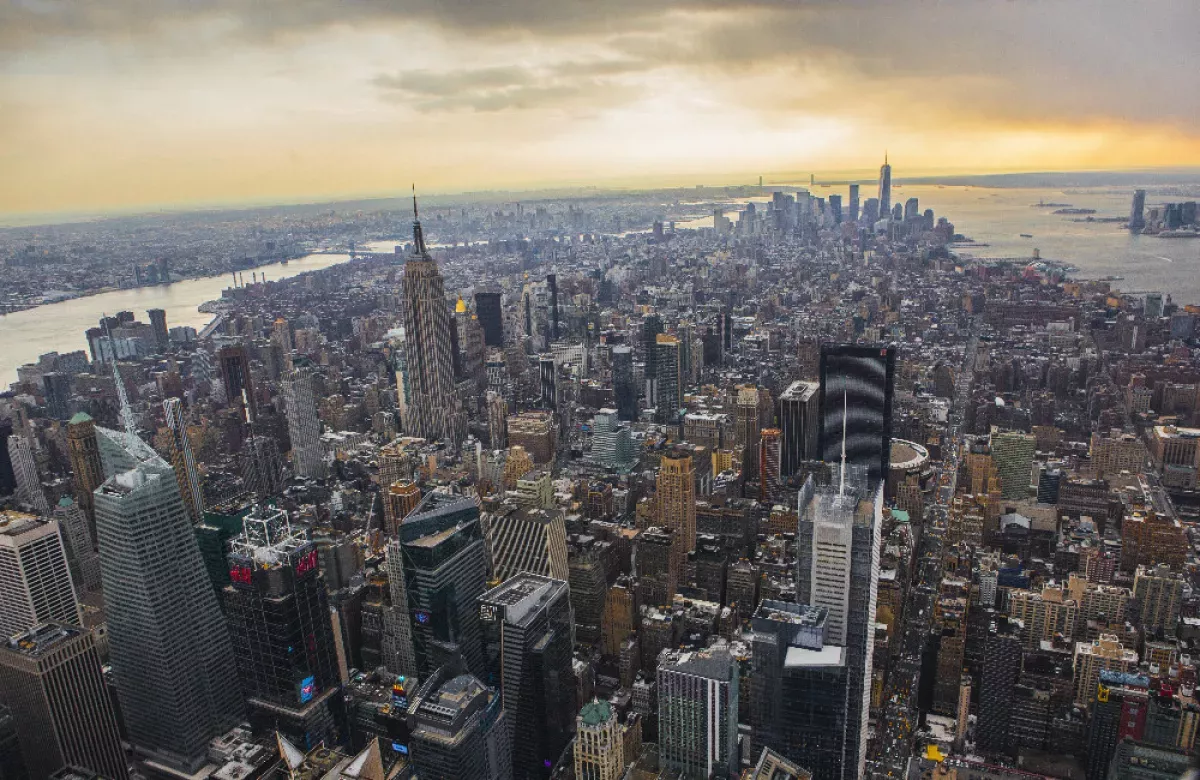Manhattan, the most densely populated and smallest of New York City's five boroughs, is coterminous with New York County, the smallest county in New York State. Situated primarily on Manhattan Island at the state's southern tip, Manhattan forms the heart of the Northeast megalopolis and the New York metropolitan area's urban core. As New York City's economic and administrative hub, Manhattan is renowned as a global capital of culture, finance, media, and entertainment.
1900: Demographic Changes in Manhattan
In 1900, Manhattan's majority white ethnic group constituted 98.7% of the population. By 1990, this percentage had declined to 58.3%, reflecting significant demographic shifts over the century.
1903: Completion of Williamsburg Bridge
In 1903, the Williamsburg Bridge was completed, connecting Manhattan to Brooklyn and enhancing accessibility.
1903: Establishment of the New York Highlanders
The New York Yankees franchise was established in 1903 under the name "Highlanders," named after their home stadium, Hilltop Park.
1904: Opening of New York City Subway
In 1904, the construction of the New York City Subway was completed, significantly improving transportation and connectivity within the city.
1908: "The Melting Pot" Play Debuts
The play "The Melting Pot" by Israel Zangwill, which used the Lower East Side's immigrant communities as inspiration for its depiction of a "melting pot" of cultures, premiered in 1908.
1909: Completion of Manhattan and Queensboro Bridges
In 1909, the Manhattan Bridge and the Queensboro Bridge were completed, further connecting Manhattan to Brooklyn and Queens respectively.
1910: Original Penn Station Completed
The McKim, Mead & White-designed Penn Station, considered a masterpiece of the Beaux-Arts style, was completed in 1910.
March 25, 1911: Triangle Shirtwaist Factory Fire
On March 25, 1911, the Triangle Shirtwaist Factory fire in Greenwich Village resulted in the deaths of 146 garment workers. This tragedy led to significant reforms in New York City's fire department, building codes, and workplace safety regulations.
1911: New York Giants at Hilltop Park
In 1911, the New York Giants played their home games at Hilltop Park, a departure from their usual home at the Polo Grounds.
1912: Commemoration of Triangle Shirtwaist Factory Fire
In 1912, around 20,000 workers, a quarter of them women, marched upon Washington Square Park to commemorate the Triangle Shirtwaist Factory fire. The event symbolized women's liberation and the alliance of the labor and suffrage movements.
1912: New York Highlanders' Final Season at Hilltop Park
The New York Highlanders concluded their tenure at Hilltop Park in 1912, marking the end of an era for the team at that location.
1913: New York Yankees Move to the Polo Grounds and Official Name Change
In 1913, the New York Highlanders relocated to the Polo Grounds and officially changed their name to the New York Yankees.
1913: Completion of Woolworth Building
In 1913, the Woolworth Building was completed, becoming the tallest building in the world at the time.
1914: Establishment of Bronx County
In 1914, Bronx County was established, separating from New York County, which included Manhattan. This marked a significant administrative change in New York City's structure.
1914: Completion of the Manhattan Municipal Building
The Manhattan Municipal Building, one of the world's largest governmental buildings, was completed in 1914 and houses the offices of the mayor's staff and thirteen municipal agencies.
1915: Construction of the Equitable Building and the 1916 Zoning Resolution
The construction of the Equitable Building in 1915, a towering skyscraper of its time, spurred the enactment of the 1916 Zoning Resolution. This landmark legislation aimed to regulate the height and shape of new buildings in Manhattan, requiring setbacks to preserve light and air at street level and shaping the city's iconic skyline.
1916: Implementation of the 1916 Zoning Resolution
The implementation of the 1916 Zoning Resolution marked a turning point in Manhattan's urban development. This law, enacted in response to the growing height of skyscrapers, mandated setbacks in building design, influencing the city's architectural aesthetic and ensuring access to light and air at street level.
1917: Tunnel 1 Delivers Water to Manhattan
In 1917, Tunnel 1, designed to carry water from the Catskill Mountains watershed to Manhattan, was completed.
1920: Start of Prohibition
The Prohibition era began in 1920, leading to a surge in organized crime as the Mafia capitalized on the black market for liquor.
1923: New York Yankees Move to Yankee Stadium
The New York Yankees moved across the Harlem River to their new home, Yankee Stadium, in 1923, leaving behind the Polo Grounds.
1925: New York Giants Join the National Football League
The New York Giants football team joined the National Football League (NFL) in 1925 and began playing their home games at the Polo Grounds, sharing the stadium with their baseball counterparts.
1926: New York Rangers' Inaugural Season
The New York Rangers hockey team was established and began playing their home games at Madison Square Garden during the 1926-1927 season.
1927: New York Rangers' First Full Season
The New York Rangers played their first full season in 1927, having begun play in the latter part of the previous year.
1929: End of the Tenement Era
Stricter fire codes and increased elevator use in residential buildings led to a new housing code in 1929 that effectively ended the construction of tenements, although many still stand on the East Side.
1930: Construction of Skyscrapers
In 1930, the 40 Wall Street and Chrysler Building were completed, competing for the title of the world's tallest building.
1931: Completion of Empire State Building
In 1931, the Empire State Building was completed, becoming the world's tallest building at the time.
1933: End of Prohibition
Prohibition ended in 1933, marking the end of the nationwide ban on alcohol and the decline of the Mafia's dominance in the liquor trade.
February 9, 1934: Record Low Temperature in Manhattan
On February 9, 1934, Manhattan experienced its lowest temperature on record, reaching -15°F (-26°C). This extreme cold highlights the city's vulnerability to harsh winter weather conditions.
1935: Completion of Tunnel 2 Expands Water Supply
Manhattan's water supply from the Catskill Mountains watershed was further enhanced in 1935 with the completion of Tunnel 2.
1935: Completion of First Houses
The First Houses in the East Village, one of the first publicly-funded low-income housing projects in the US, were completed in 1935.
July 9, 1936: Record High Temperature in Manhattan
On July 9, 1936, Manhattan faced an extreme heatwave, reaching a record high temperature of 106°F (41°C). This event underscored the potential severity of heat in the city and the impact of the urban heat island effect.
1938: First National Invitation Tournament
The inaugural National Invitation Tournament, the first national college-level basketball championship, was held in New York City in 1938 and has remained in the city ever since.
1940: Queens–Midtown Tunnel Completion
The Queens–Midtown Tunnel, the largest non-federal project at the time, was completed in 1940. President Franklin D. Roosevelt was the first to drive through it.
1941: New York Americans' Final Season in Manhattan
The New York Americans hockey team played their final season in Manhattan in 1941, marking the end of their time at Madison Square Garden.
1942: New York Americans Fold
The New York Americans hockey team, which had relocated to Brooklyn, folded after the 1941-1942 NHL season.
1946: New York Knicks Join the NBA
The New York Knicks were established in 1946 as one of the founding teams of the National Basketball Association (NBA) and initially played their home games at the 69th Regiment Armory.
1947: Opening of Stuyvesant Town–Peter Cooper Village
In 1947, the Stuyvesant Town–Peter Cooper Village housing development opened, targeting returning veterans and contributing to postwar economic growth.
1949: WLIB's Broadcasts for the African-American Community
Starting in 1949, WLIB commenced its broadcasts specifically targeting the African-American community.
1950: Port Authority Bus Terminal Opening
The Port Authority Bus Terminal, the world's busiest bus station, opened in 1950, designed for 60,000 daily passengers.
1952: Completion of United Nations Headquarters
In 1952, the United Nations relocated to its new headquarters along the East River in Manhattan, marking a significant development in international diplomacy.
1956: New York Giants Move to Yankee Stadium
After years of sharing the Polo Grounds with the baseball team of the same name, the New York Giants football team moved to Yankee Stadium in 1956.
1957: New York Giants Move to California
Following the 1957 season, the New York Giants relocated to California alongside the Brooklyn Dodgers, marking the end of an era for the team in Manhattan.
1960: Titans of New York Begin Play at the Polo Grounds
The New York Jets, originally known as the Titans of New York, played their inaugural season at the Polo Grounds in 1960.
1961: Plans Unveiled to Replace Penn Station
In 1961, the Pennsylvania Railroad announced its intention to demolish the existing Penn Station and construct a new Madison Square Garden complex in its place.
1962: New York Mets' First Season at the Polo Grounds
The New York Mets played their inaugural season at the Polo Grounds in 1962, marking the beginning of their short-lived tenure at the historic stadium.
October 1963: Demolition of Old Penn Station
In October 1963, the demolition of the original Penn Station in New York City began, despite significant public outcry and protests.
1963: New York Mets' Second and Final Season at the Polo Grounds
The New York Mets concluded their two-season stint at the Polo Grounds in 1963 before moving to Shea Stadium the following year.
April 1964: Demolition of the Polo Grounds
In April 1964, the Polo Grounds, a historic stadium that had been home to the New York Giants and other teams, was demolished to make way for public housing.
1964: "One Man, One Vote" Decision
The Supreme Court's landmark "one man, one vote" decision in 1964 established the principle of equal representation in voting districts, ultimately leading to the invalidation of the New York City Board of Estimate.
1964: Titans of New York Move to Shea Stadium
The Titans of New York relocated to Shea Stadium in Queens in 1964, joining the New York Mets at the newly constructed venue.
1965: NYC Landmarks Preservation Commission Established
The demolition of Penn Station led to the creation of the New York City Landmarks Preservation Commission in 1965, aiming to safeguard the city's architectural heritage.
1968: Construction of the World Trade Center and Battery Park City
In 1968, during the construction of the World Trade Center, excavated material was used to expand Manhattan's shoreline. This land reclamation project led to the creation of Battery Park City, a new residential and commercial neighborhood.
June 28, 1969: Stonewall Riots
On June 28, 1969, the Stonewall riots erupted in the Greenwich Village neighborhood of Lower Manhattan, marking a pivotal moment in the gay liberation movement and the modern fight for LGBT rights.
1969: Stonewall Riots
The Stonewall Riots, a pivotal event in the fight for LGBTQ+ rights, took place in 1969, marking the beginning of the modern LGBTQ rights movement.
1970: Construction Begins on Tunnel No. 3
Work began in 1970 on Tunnel No. 3, intended to further augment Manhattan's water supply.
1971: WLIB Becomes New York City's First Black-Owned Radio Station
In 1971, WLIB made history by becoming New York City's first radio station under Black ownership.
1971: Founding of Manhattan Neighborhood Network
The year 1971 marked the establishment of the Manhattan Neighborhood Network, the oldest public-access television cable channel in the United States, known for its diverse local programming.
1974: New York Cosmos Begin Play at Downing Stadium
The New York Cosmos soccer team played their home games at Downing Stadium for two seasons, beginning in 1974.
1977: Rebirth of Wall Street
In 1977, Wall Street began to experience a rebirth, with employment in the financial sector doubling by 1987, reestablishing Manhattan as the world's financial center.
1978: Roosevelt Island Tramway Opening
The Roosevelt Island Tramway, one of two commuter cable car systems in North America, began serving the island in 1978.
1979: Peak Murder Rate in Manhattan
Manhattan's murder rate reached its highest point in 1979, with 42 murders per 100,000 residents, highlighting a period of heightened crime in the borough.
1981: Times Square Decline
In 1981, Times Square and 42nd Street were described as the 'sleaziest block in America' due to rampant sex trade, street crime, and public drug use. This period marked a low point in the area's history.
1981: Start of Snowfall Data Collection Period
The year 1981 marked the beginning of a period for which consistent snowfall data is available for Manhattan, offering insights into the city's winter weather patterns over several decades.
May 1984: Marble Hill's Jurisdictional Resolution
In May 1984, a court ruling addressed the unique situation of Marble Hill, which was physically part of the Bronx but historically considered part of Manhattan. The ruling recognized its dual status, and later that year, legislation confirmed Marble Hill as belonging to both New York County (Manhattan) and Bronx County.
1985: Bronx Surpasses Manhattan in Murder Rate
The Bronx overtook Manhattan as the borough with the highest murder rate in New York City in 1985.
1987: Wall Street Employment Peak
By 1987, Wall Street employment had doubled since 1977, solidifying Manhattan's position as the world's financial center.
1989: Revision of the New York City Charter
The New York City Charter, which governs Manhattan, was revised in 1989 to implement a strong mayor-council system.
1989: Supreme Court Ruling on the Board of Estimate
The U.S. Supreme Court ruled in 1989 that the New York City Board of Estimate was unconstitutional due to unequal representation among boroughs, violating the Fourteenth Amendment's Equal Protection Clause.
1990: Demographic Changes in Manhattan
By 1990, the percentage of Manhattan's majority white ethnic group had declined to 58.3%, reflecting significant demographic changes from 1900.
1990: Borough President's Role Redefined
Following the Supreme Court's ruling on the Board of Estimate, the role of the Borough President became largely symbolic, acting as an advocate for the borough rather than having direct administrative power.
1990: High Murder Rate in Manhattan
In 1990, Manhattan experienced a high number of murders, with 503 recorded during the year, reflecting a citywide peak in violent crime.
1993: World Trade Center Bombing
In 1993, the World Trade Center bombing occurred when a van bomb exploded below the North Tower, killing six people. This attack was described by the FBI as a precursor to the 9/11 attacks.
1997: New York Liberty Founded
The New York Liberty, a WNBA team, was established in 1997 as one of the league's eight original franchises and shared Madison Square Garden with the Knicks.
2000: Low Car Ownership in Manhattan
According to the 2000 US Census, 77.5% of Manhattan households did not own a car.
2000: Manhattan Population Census
The 2000 census recorded Manhattan's population at 1,537,195, serving as a benchmark for measuring population trends and demographic changes in the borough over time.
September 11, 2001: September 11 Attacks
On September 11, 2001, the Twin Towers of the World Trade Center were struck by hijacked planes, leading to their collapse and the deaths of 2,606 people in Lower Manhattan. This tragic event caused extensive damage and led to significant rebuilding efforts.
2001: Closure of Fresh Kills Landfill
Following the closure of the Fresh Kills Landfill in 2001, New York City began exporting the bulk of its trash to other states for disposal.
2002: Demolition of Downing Stadium and Construction of Icahn Stadium
Downing Stadium was demolished in 2002 to make way for the construction of the $45 million Icahn Stadium, which included a FIFA-approved soccer stadium as part of Pelé's and the Cosmos' legacy.
2003: Low Rate of Owner-Occupied Housing
In 2003, only 24.3% of Manhattan residents lived in owner-occupied housing, the second-lowest rate nationwide.
June 2005: New York Jets' West Side Stadium Proposal Rejected
The New York Jets' proposal for a West Side Stadium faced rejection in June 2005.
2005: High Concentration of College Graduates in Manhattan
By 2005, Manhattan had established itself as having one of the highest concentrations of highly educated individuals in the nation, with approximately 60% of residents being college graduates and 25% holding advanced degrees.
2006: Time Warner Center's Peak Value
During 2006, the Time Warner Center held the distinction of having the highest listed market value in New York City, reaching US$1.1 billion.
July 2, 2007: Record-Breaking Real Estate Sale
On July 2, 2007, the sale of 450 Park Avenue for US$510 million, equivalent to about US$1,589 per square foot, set a new record for an American office building.
2008: Congestion Pricing Proposal Rejected
Mayor Michael Bloomberg proposed a congestion pricing system for Manhattan south of 60th Street in 2008, but the state legislature rejected it.
2009: US Helicopter Ceases Operations
In 2009, US Helicopter, which provided helicopter service connecting Downtown Manhattan Heliport with JFK and Newark airports, went out of business.
2010: Growing Income Inequality in Manhattan
Census data from 2022 highlighted growing income inequality in Manhattan, with a widening gap between the top 20% and bottom 20% of households since 2010.
2010: Religious Diversity in Manhattan
In 2010, Manhattan displayed its religious diversity. The largest organized religious group was the Archdiocese of New York, followed by Orthodox Jews, Muslims, non-denominational adherents, Episcopalians, Baptists, Reform Jews, Mahayana Buddhists, and Presbyterian denominations.
2010: Manhattan's Daytime Population Surge
Manhattan's population swelled to 3.94 million during daytime hours in 2010, fueled by an influx of 1.48 million commuters, visitors, and students.
2010: Emergence of "Little Australia" in Nolita
Since 2010, a distinct Australian presence has been growing in the Nolita neighborhood of Lower Manhattan, earning it the nickname "Little Australia." This cultural enclave reflects the city's global appeal and the diverse communities that make it their home.
2010: Manhattan Population Growth and Census
The 2010 census indicated a 3.2% population increase in Manhattan since 2000, reaching 1,585,873 residents. This growth reflected the ongoing appeal of Manhattan as a vibrant and desirable place to live and work.
2010: End of Snowfall Data Collection Period
The year 2010 signified the end of a specific period for which comprehensive snowfall data was collected and analyzed in Manhattan, providing valuable information about winter weather trends during those years.
September 17, 2011: Occupy Wall Street Protests
On September 17, 2011, the Occupy Wall Street protests began in Zuccotti Park, Lower Manhattan. The movement received global attention and sparked a worldwide movement against social and economic inequality.
2011: Applied Sciences Graduate School Initiative
Mayor Michael Bloomberg announced the selection of Cornell University and Technion-Israel Institute of Technology in 2011 to establish a US$2 billion graduate school of applied sciences on Roosevelt Island, with the goal of solidifying New York City's position as a global technology leader.
2011: Start of American Community Survey Period
The American Community Survey, which would reveal that 59.9% of Manhattan residents over 25 had a bachelor's degree, began its data collection period in 2011.
2011: High Bus Ridership
The New York City Bus system served 784 million passengers in 2011, the highest in the nation.
2012: Hurricane Sandy devastates Lower Manhattan
In 2012, Hurricane Sandy caused widespread destruction in Lower Manhattan. The storm brought record-high storm surges from New York Harbor, severe flooding, and high winds, resulting in power outages for many residents, gasoline shortages, and mass transit disruptions. The event sparked discussions about building seawalls and coastal barriers to protect the borough and metropolitan area from future storm threats.
2012: Number of Bicycle Commuters
Manhattan had 9,613 bicycle commuters in 2012.
November 1, 2013: New Gas Pipeline Doubles Manhattan's Natural Gas Supply
On November 1, 2013, Manhattan's natural gas supply doubled with the opening of a new gas pipeline.
2013: Tourist Attractions and Financial Center
In 2013, Manhattan hosted three of the world's most-visited tourist attractions: Times Square, Central Park, and Grand Central Terminal. The borough was also home to the New York Stock Exchange and Nasdaq, making it a leading financial and fintech center.
October 2014: Waldorf Astoria Becomes Most Expensive Hotel Sold
In October 2014, The Waldorf Astoria New York was acquired by the Anbang Insurance Group for US$1.95 billion, making it the most expensive hotel ever sold.
November 2014: Fulton Center Completion
The $1.4 billion Fulton Center transportation hub was completed in November 2014.
2014: Growth of New York City's Tech Sector
By 2014, New York City was home to 300,000 tech sector employees, signifying a significant expansion beyond the initial Silicon Alley hub.
2014: Biotechnology Investment and Development
By mid-2014, Accelerator, a biotech investment firm, raised over US$30 million to support the creation of biotechnology startups at the Alexandria Center for Life Science in Manhattan.
2014: Manhattan's Ranking in Religious Organizations
In 2014, Manhattan ranked seventeenth among U.S. counties in terms of the number of religious organizations, further emphasizing its diverse religious landscape and the presence of a wide array of faiths.
2014: Completion of One World Trade Center
In 2014, the new One World Trade Center was completed, standing at 1,776 feet and becoming the tallest building in the Western Hemisphere.
February 2015: NYC Ferry Announcement
Mayor Bill de Blasio announced plans for NYC Ferry in February 2015 to expand ferry service to underserved communities.
September 2015: 7 Subway Extension Opening
The $2.4 billion 7 Subway Extension opened in September 2015.
2015: Language Diversity in Manhattan
As of 2015, data highlighted the linguistic diversity of Manhattan. While 60% of residents aged five and older spoke only English at home, a significant portion of the population spoke other languages, including Spanish, Chinese, French, Korean, Russian, and Japanese.
2015: Silicon Alley Venture Capital Investment
Silicon Alley attracted over US$7.3 billion in venture capital investment in 2015, further fueling the growth of tech startups and employment in Manhattan and the broader New York City area.
2015: End of American Community Survey Period
The American Community Survey concluded its data collection period in 2015, providing insights into the educational attainment of Manhattan residents.
March 2016: World Trade Center Transportation Hub Completion
The $4 billion World Trade Center Transportation Hub was completed in March 2016.
April 2016: Political Affiliation Statistics in Manhattan
As of April 2016, registered Republicans constituted a minority in Manhattan's electorate, representing only 9.88% of voters. Democrats accounted for the majority at 68.41%, while 17.94% were unaffiliated.
January 2017: Second Avenue Subway Phase 1 Opening
Phase 1 of the $4.5 billion Second Avenue Subway opened in January 2017.
October 31, 2017: Terrorist Attack on West Side Highway Bike Path
On October 31, 2017, a terrorist attack took place in Lower Manhattan. The perpetrator drove a truck down a bike path along the West Side Highway, resulting in the loss of eight lives.
2017: Penn Station Restoration Plan Announced
A multibillion-dollar plan to restore Penn Station to its former glory and improve its functionality as a transportation hub was unveiled in 2017.
2017: Manhattan's Largest Hospitals
As of 2017, Manhattan is home to two of the 25 largest hospitals in the United States.
2017: The Village Voice Goes Digital
In 2017, The Village Voice, one of the largest alternative newspapers in the United States, made the decision to discontinue its print edition and transition into a fully digital platform.
2017: New York Liberty Relocates Majority of Home Games
In 2017, the New York Liberty moved most of their home schedule to White Plains in Westchester County, departing from their shared venue at Madison Square Garden.
2017: New York Liberty Relocates
The New York Liberty, a WNBA team, moved their primary home venue from Madison Square Garden to the Barclays Center in Brooklyn in 2017.
2017: First NYC Ferry Routes Open
The initial routes of the NYC Ferry system, with all termini in Manhattan, opened in 2017.
2017: Increase in Bicycle Commuters
The number of bicycle commuters in Manhattan roughly doubled to 19,676 in 2017.
2018: Manhattan's Median Household Income
Between 2018 and 2022, Manhattan's median household income was $99,880, based on Census data for New York County.
2018: Central Park Traffic Ban
In 2018, a six-mile stretch of road within Central Park was permanently closed to vehicular traffic.
2018: Start of Record-Breaking Broadway Season
The 2018-2019 Broadway season, which would ultimately set attendance records, commenced in 2018.
May 2019: Record-Breaking Broadway Season
The 2018-2019 Broadway season, ending in May 2019, achieved record-breaking attendance with 14.8 million attendees and a gross revenue of $1.83 billion.
2019: Record-Breaking Home Sale and Tallest Residential Building
In 2019, Manhattan witnessed the most expensive home sale in the United States, with a penthouse apartment overlooking Central Park selling for US$238 million. Additionally, Central Park Tower, reaching a height of 1,550 feet, became the world's tallest residential building.
2019: Stonewall 50 - WorldPride NYC
In 2019, Stonewall 50 - WorldPride NYC, the largest international Pride celebration ever held, took place in commemoration of the 50th anniversary of the Stonewall uprising, drawing 150,000 participants and 5 million spectators.
March 2020: Start of the COVID-19 Pandemic
The COVID-19 pandemic began in March 2020, leading to an increase in violent crime in Upper Manhattan, reflecting a nationwide trend.
2020: Population Density and Property Value
In 2020, Manhattan was recorded as one of the most densely populated places in the world, with a population of 1,694,250 living in a land area of 22.66 square miles, resulting in 72,918 residents per square mile. Manhattan's residential property had the highest sale price per square foot in the United States in 2020.
2020: Tourism Decline Due to COVID-19 Pandemic
In 2020, Manhattan's tourism experienced a significant decline, with visitor numbers dropping by two-thirds as a result of the COVID-19 pandemic.
2020: Manhattan Population Growth and Census
The 2020 census revealed a 6.8% population increase in Manhattan since the previous decade, reaching 1,694,250 residents. This growth highlighted Manhattan's continued desirability as a place to live and work, contributing to its status as a global hub.
January 2021: Moynihan Train Hall Opens
January 2021 marked the opening of the Moynihan Train Hall, a $1.6 billion expansion of Penn Station into the historic James A. Farley Post Office Building.
May 2021: Little Island Opens to the Public
In May 2021, Little Island, a new park in the Hudson River, opened to the public. The park, built on piers and connected to Manhattan by footbridges, offers a unique green space and scenic views.
November 2021: Mark Levine Elected Manhattan Borough President
Mark Levine, a Democrat, was elected as the Borough President of Manhattan in November 2021, succeeding Gale Brewer, who went on to represent the sixth district of the New York City Council.
2021: High Median Home Value
As of the fourth quarter of 2021, Manhattan's median home value was $1,306,208, the second-highest among US counties.
2021: Port Authority Bus Terminal Expansion Plan
In 2021, the Port Authority announced a $10 billion plan to expand and modernize the bus terminal.
2022: Significant Decrease in Murders in Manhattan
By 2022, the number of murders in Manhattan had dropped to 78, representing an 84% decrease from the 1990 peak and indicating a significant improvement in safety and security.
2022: Broadway Revenue Rebound
Following the impact of the COVID-19 pandemic, Broadway revenues rebounded to $1.58 billion in the 2022-2023 season, with a total attendance of 12.3 million.
2022: Manhattan Records Highest Population Density in the US
In 2022, Manhattan's population density soared to 70,450.8 inhabitants per square mile, securing its position as the most densely populated county in the United States. This distinction underscores the intense concentration of people and activity within the borough's limited area.
2022: Manhattan's Dominance in Office Space
Manhattan boasted over 520 million square feet of office space in 2022, solidifying its position as the largest office market in the United States.
2022: High Housing Costs in Manhattan
Manhattan had 923,302 housing units at a density of 40,745 units per square mile. The average rent was $2,024, the highest in the US.
2022: Manhattan's High Per Capita Income
Manhattan recorded the highest per capita income in 2022 among U.S. counties with over 50,000 residents, reaching $186,848.
2023: Decline in Violent Crime Rates
After peaking during the pandemic, rates of shootings and violent crimes in Upper Manhattan declined in 2023, following a nationwide trend.
2023: Democratic Representation of Manhattan in Congress
As of 2023, Manhattan was represented by three Democrats in the United States House of Representatives.
2023: One World Trade Center
As of 2023, One World Trade Center remains the tallest building in the Western Hemisphere and the seventh-tallest in the world.
2023: Public Housing in Manhattan
In 2023, NYCHA public housing in Manhattan housed nearly 100,000 residents in over 50,000 units.
2023: Manhattan's Cost of Living and Wage Data
In the second quarter of 2023, Manhattan's average weekly wage stood at $2,590, ranking fourth-highest nationally. However, 2023 also saw Manhattan experiencing the highest cost of living in the United States.
2023: Tourism Rebound
Manhattan's tourism demonstrated a recovery in 2023, as visitor numbers climbed back to 63.3 million following the decline during the pandemic.
2023: East Side Access Project Opening
The $11.1 billion East Side Access project, connecting the East Side of Manhattan with Long Island City, Queens, opened in 2023.
2024: New Port Authority Bus Terminal Plans Announced
The Port Authority announced plans for a new bus terminal to be completed by 2032, including office buildings to fund the project, in 2024.
2032: Projected Completion of New Port Authority Bus Terminal
The new Port Authority Bus Terminal is projected to be completed in 2032.
Mentioned in this timeline

Basketball is a team sport played on a rectangular court...

Michael Bloomberg is an American entrepreneur politician and philanthropist He...
California is a U S state on the Pacific Coast...
Pennsylvania is a U S state located in the Mid-Atlantic...
Australia officially the Commonwealth of Australia encompasses the Australian mainland...

Football is a family of team sports primarily involving kicking...
Trending

5 months ago Blue Angels Prepare to Soar Over Seattle for Seafair Weekend Festival Air Show

Rico Dowdle is an American professional football running back currently playing for the Carolina Panthers in the NFL He played...

7 months ago Ricky Pearsall sidelined from OTAs with hamstring injury; recovery and return uncertain.

2 months ago Jordan Love's wife, Ronika Stone, supports the Packers QB, balancing personal and professional life.

15 days ago Johnny Depp Describes His Life with Vanessa Paradis as 'Blissful' in Recent Statement.
6 months ago Denver Rattled: Rare 2.9 Magnitude Earthquake Shakes Colorado, Raising Questions About Seismic Activity
Popular

Candace Owens is an American conservative political commentator and author...

Ilhan Omar is an American politician currently serving as the...

XXXTentacion born Jahseh Dwayne Ricardo Onfroy was a controversial yet...

Tom Cotton is an American politician and Army veteran currently...

Kelsey Grammer is an accomplished American actor producer and singer...

Oprah Winfrey an American talk show host television producer actress...
